Comprehensive Bee Guide – Manage & Coexist Safely
Bees play a pivotal role in our ecosystem, serving as essential pollinators for a wide range of plants, including fruits, vegetables, and flowers. These industrious insects, known for their distinctive black and yellow stripes, belong to the Apidae family and are found on every continent except Antarctica. With over 20,000 known species, bees exhibit remarkable diversity in size, color, and behavior. While honeybees are perhaps the most renowned for their honey production, other species, such as bumblebees and solitary bees, also contribute significantly to pollination and the maintenance of biodiversity. Unfortunately, bees face numerous challenges, including habitat loss, pesticides, and climate change, which threaten their populations and, in turn, food security. As such, understanding and conserving these remarkable creatures is of utmost importance to ensure the health of our planet and the sustainability of our food supply.
The different species of bees
The most common species of bees can vary depending on the region and habitat, but here are some of the most well-known and widely distributed bee species:
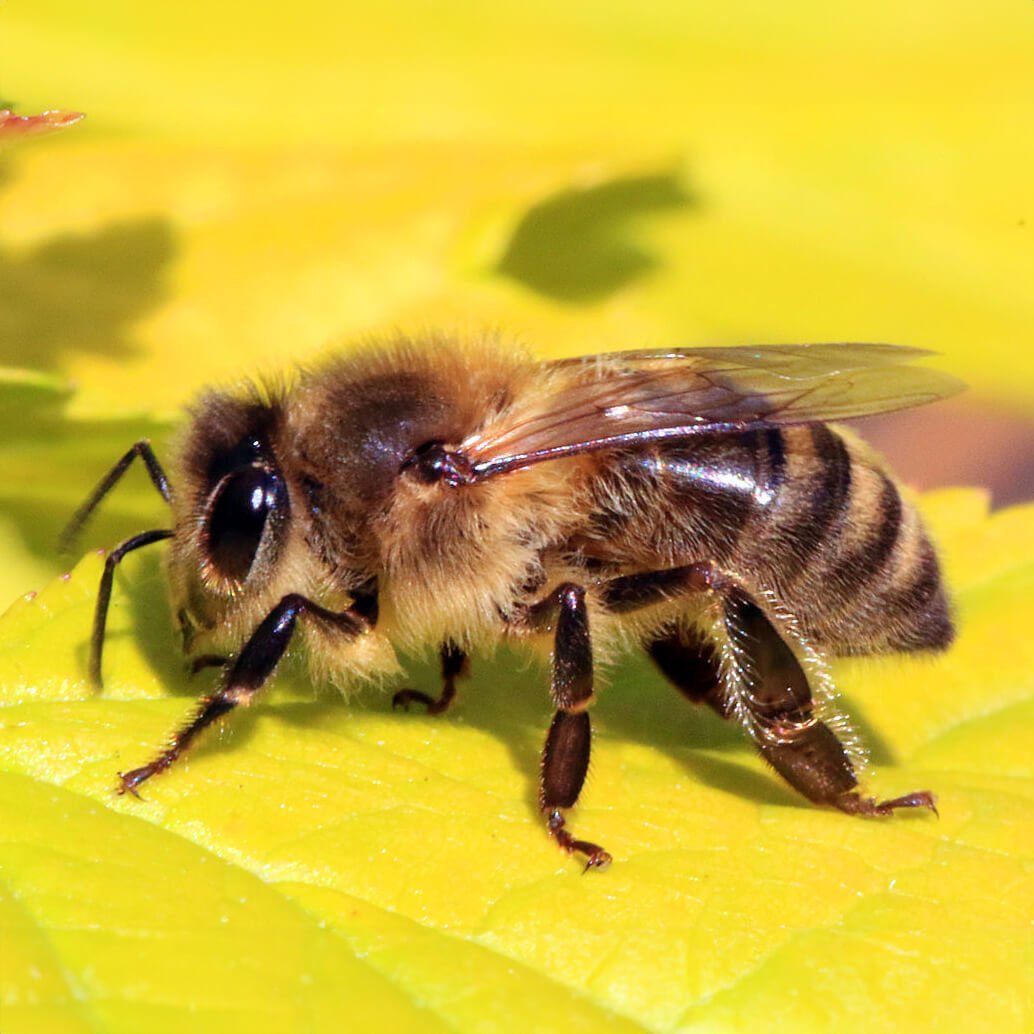
Honeybee (Apis mellifera)
Honeybees are perhaps the most familiar bee species, known for their honey production. They live in large colonies and are essential pollinators for numerous crops and plants.
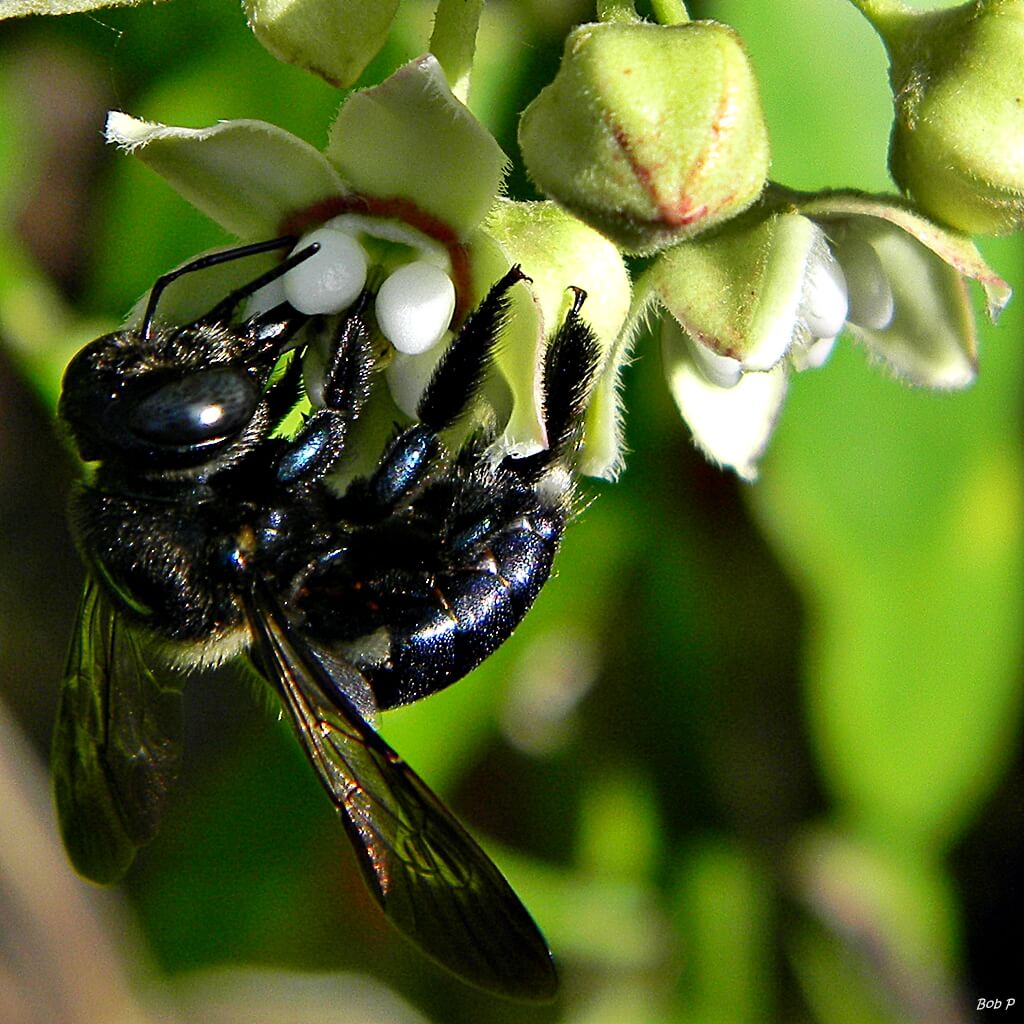
Carpenter Bee (Xylocopa spp.)
Carpenter bees are solitary bees that are known for their ability to excavate tunnels in wood. They are typically larger in size and can be found in gardens and woodlands.
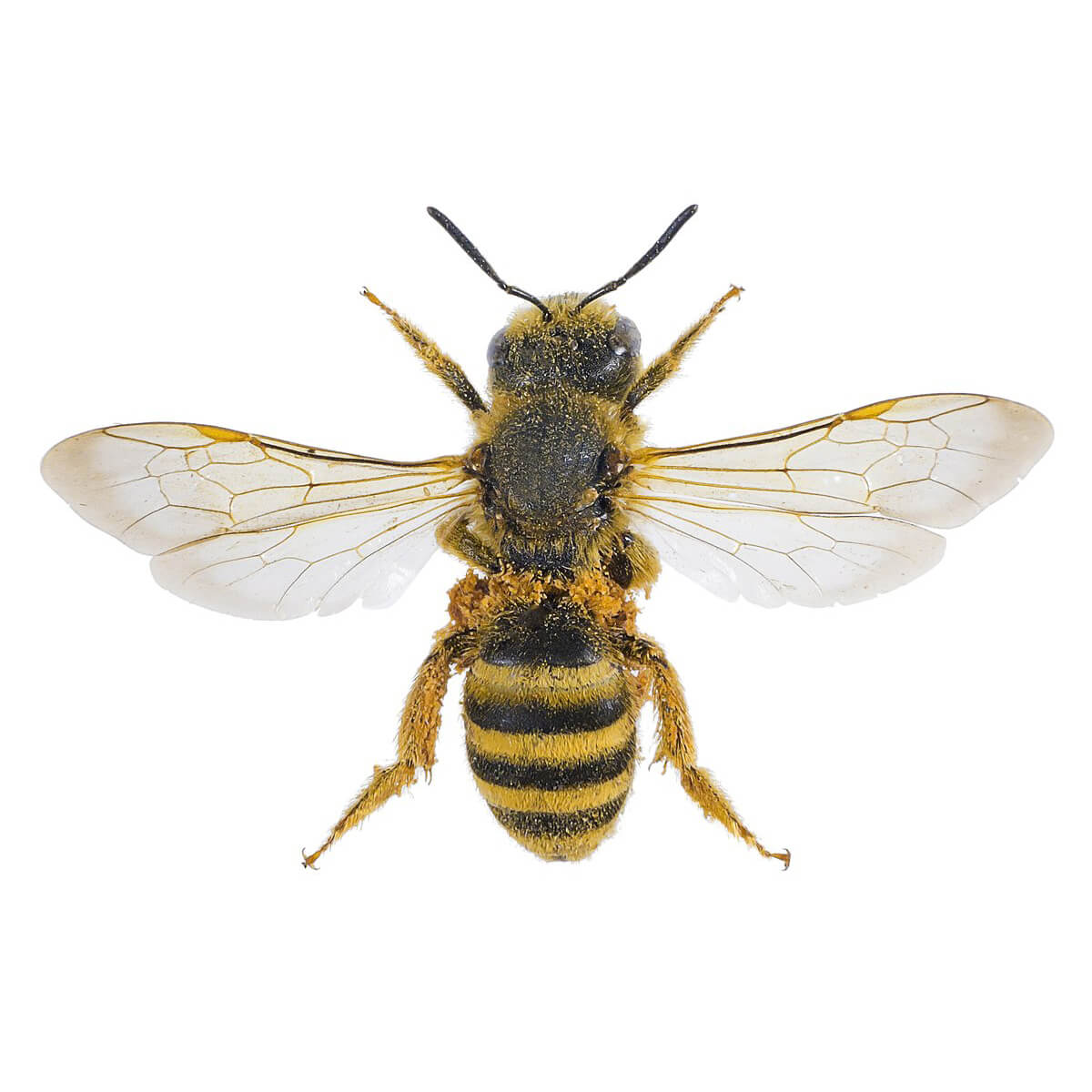
Sweat Bee (Halictidae family)
Sweat bees are small, often metallic-colored bees. They are both solitary and social, with some species known for their attraction to human sweat. They pollinate a wide range of plants.

Bumblebee (Bombus spp.)
Bumblebees are robust, fuzzy bees with distinctive black and yellow stripes. They are social insects that live in smaller colonies compared to honeybees and are effective pollinators for various flowering plants.

Mason Bee (Osmia spp.)
Mason bees are solitary bees that are excellent pollinators for fruit trees and berry bushes. They construct their nests in cavities, such as hollow reeds or holes in wood.

Blue Orchard Bee (Osmia lignaria)
These solitary bees are excellent pollinators for fruit trees, especially apple and cherry trees. They are known for their vibrant blue-black color.
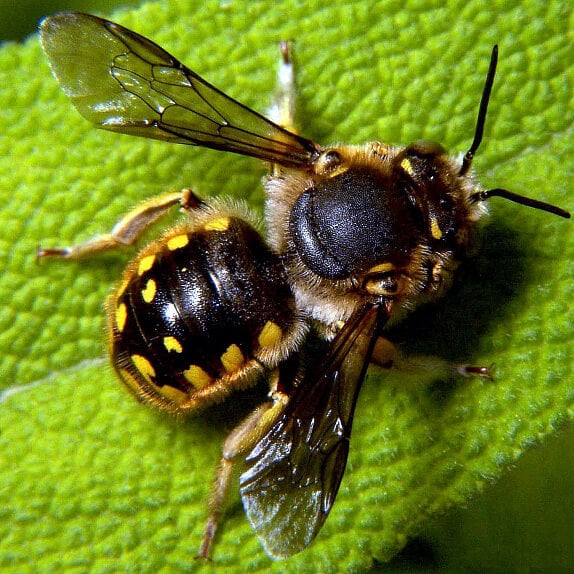
Leafcutter Bee (Megachile spp.)
Leafcutter bees are solitary bees known for their unique habit of cutting circular pieces of leaves to line their nests. They are valuable pollinators for various plants, including alfalfa.

Mining Bee (Andrena spp.)
Mining bees are solitary bees that nest in the ground, often creating small mounds of soil. They are generalist pollinators and play a crucial role in wildflower pollination.
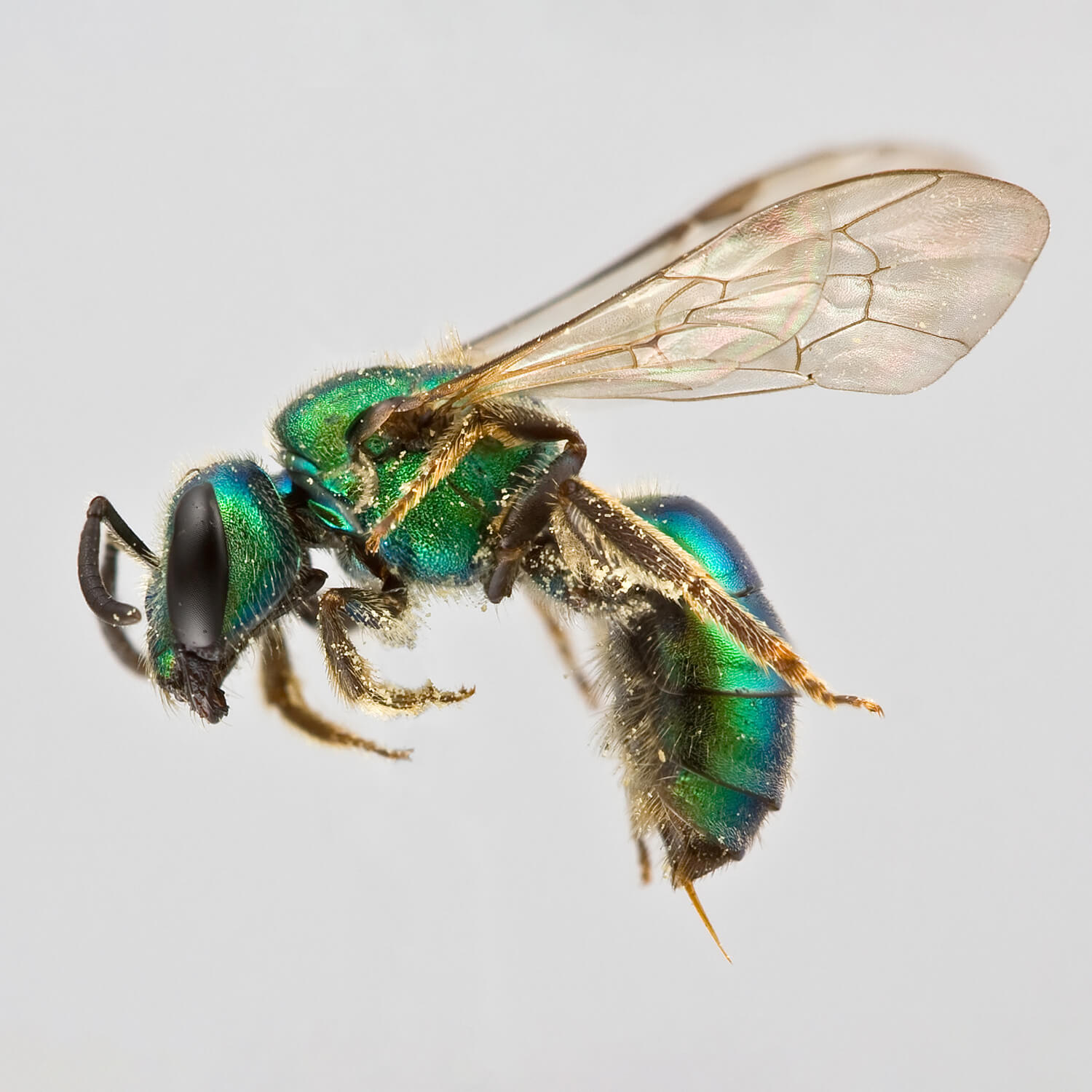
Green Sweat Bee (Agapostemon spp.)
Green sweat bees are small to medium-sized bees known for their metallic green or blue-green coloration. They are often seen visiting a variety of flowers.
These are just a few examples of the most common bee species. There are thousands of bee species worldwide, each with its unique characteristics and ecological roles. Bees are incredibly diverse and essential contributors to pollination and ecosystem health.
There are over 20,000 known species of bees globally, and they come in various sizes, colors, and shapes. From the tiny stingless bee to the large and fuzzy bumblebee, each species has its unique traits and behaviors.
The life cycle of bees
The life cycle of bees is a captivating journey that showcases the intricate workings of these remarkable insects. Bees, as nature’s pollinators, not only contribute to the vibrant tapestry of our ecosystems but also play a pivotal role in ensuring the abundance of fruits, vegetables, and flowers we rely on.

Egg Stage
The bee life cycle commences with the laying of eggs by the queen bee. Inside the carefully constructed cells of the hive, or in the case of solitary bees, within individual nesting sites, these tiny, oval-shaped eggs are deposited. The number and size of eggs vary according to the bee species and environmental factors.

Pupal Stage
Metamorphosis takes center stage during the pupal stage. The bee larvae spin cocoons around themselves, undergoing a dramatic transformation within. During this phase, they develop the characteristic features of adult bees, including wings, antennae, and specialized mouthparts.

Reproductive Stage
The queen bee’s primary purpose is reproduction. She mates with multiple drones during her nuptial flight and stores their sperm for later use. Throughout her life, she lays eggs continuously, ensuring the colony’s survival and growth. Drones, on the other hand, have a short-lived existence, and once they have fulfilled their reproductive duties, they are expelled from the hive.

Larval Stage
Once the eggs hatch, bee larvae emerge. At this stage, the young bees are entirely dependent on the nourishment provided by worker bees. Their diet consists of a mixture of pollen and nectar, rich in essential nutrients. As the larvae grow, they undergo a series of molts, shedding their skin and increasing in size.

Adult Stage
Emerging from their pupal cases, fully developed adult bees burst onto the scene. They are now ready to assume their roles within the hive or ecosystem. Worker bees, drones (males), and the queen bee all play distinct roles in the colony, contributing to its overall success. Worker bees engage in foraging, hive maintenance, and tending to the queen and her offspring, while drones are primarily responsible for mating with virgin queens.
Understanding the life cycle of bees not only offers a glimpse into the wonders of nature but also highlights the critical role these industrious insects play in pollinating our world. As stewards of the environment, it is our responsibility to protect and support bee populations, ensuring the continued success of these vital pollinators. Bees, in all their stages of life, serve as a reminder of the interconnectedness of all living beings in our ecosystem.
Bees are some of the most effective pollinators in the world. They play a crucial role in pollinating approximately one-third of the world’s food crops, contributing to the production of fruits, vegetables, nuts, and more.
The seasons most conducive to bees
The seasonal cycle profoundly influences the lives of bees, those diligent pollinators that sustain our ecosystems and food sources. Understanding which seasons are most conducive to bees is crucial for appreciating their vital role in our environment.

Spring
Spring emerges as the harbinger of activity in the world of bees. As temperatures rise and flowers burst into bloom, bees spring into action. This season provides abundant nectar and pollen, making it a bountiful time for foraging. Bees, especially honeybees and bumblebees, embark on their pollination journeys, aiding in the reproduction of a myriad of plants. Spring also marks the peak of hive expansion as colonies increase in size and readiness for the warmer months ahead.

Fall
As the days grow shorter and temperatures start to cool, bees prepare for the upcoming winter. Fall is marked by a shift in focus, as bees intensify their efforts to store food for the colder months. Honeybees diligently collect nectar and pollen, transforming it into the precious honey that sustains them through winter. Meanwhile, solitary bees and bumblebee queens seek suitable nesting sites to hibernate until spring. Fall’s bounty ensures the survival of bee colonies during the leaner times ahead.
Summer
Summer brings both the warmth and the longest daylight hours, making it an ideal period for bee activity. Bees continue their foraging missions, visiting an array of blossoms and ensuring the pollination of numerous crops. As gardens and fields flourish, bees play a pivotal role in the production of fruits and vegetables. However, the scorching heat can present challenges, with bees needing to stay hydrated and regulate hive temperature. Water sources become vital during this season.
Winter
Winter is a challenging season for bees. Many species enter a state of dormancy, huddling together in their hives or nests to conserve energy and maintain warmth. Honeybees cluster around their queen and rely on stored honey for sustenance. Winter survival depends on the bees’ ability to regulate temperature and access their food reserves. While bees are less active during this season, their resilience and the care they receive from the colony are essential for their survival until the return of warmer days.
Bees, with their finely tuned instincts, adapt to the changing seasons, maximizing their productivity during the most conducive times. Recognizing the seasonal rhythms that shape their lives underscores the significance of bees in our ecosystem and highlights the need for conservation efforts to ensure their continued prosperity. These remarkable insects remind us of the intricate balance between nature and the seasons, a balance upon which our food supply and environment depend.
The lifespan of an individual worker bee is relatively short, typically only a few weeks to a few months, depending on the season and the bee species.
Where do bees come from, their habitat
Bees, those diligent pollinators that contribute to the vitality of our ecosystems, call a variety of habitats home. Understanding where bees come from and their diverse habitats sheds light on their adaptability and the vital role they play in our environment.

Wild Habitats
Many bee species have evolved to thrive in wild and natural habitats. These bees can be found in forests, meadows, grasslands, and wetlands. Solitary bees, such as mason bees and mining bees, often nest in the ground, creating burrows or utilizing existing crevices. Bumblebees are also frequent inhabitants of wild environments, seeking out abandoned rodent burrows as nesting sites. In these natural habitats, bees have adapted to the local flora and are vital for the pollination of native plants.

Agricultural Landscapes
Bees are integral to agriculture, and they can be found in farming landscapes across the globe. Honeybees are often transported to agricultural regions to pollinate crops such as almonds, apples, and blueberries. Bumblebees are also used for greenhouse pollination of tomatoes and peppers. In addition to managed bees, wild bee species contribute significantly to crop pollination in agricultural areas. Farms with diverse crop rotations and wildflower strips enhance bee biodiversity and support pollination services.

Gardens and Urban Areas
Bees are highly adaptable and can be found in gardens and urban environments worldwide. Gardens teeming with diverse flowers provide abundant nectar and pollen sources, attracting both solitary and social bees. Balconies, rooftop gardens, and community green spaces offer essential foraging opportunities for urban bee populations. Honeybees, with their hives managed by beekeepers, are commonly kept in urban and suburban settings, contributing to pollination and honey production.

Hive Habitats
Honeybees, as social insects, construct intricate hives that serve as their homes. These hives can be found in a variety of locations, from hollow tree trunks and rock crevices to purpose-built beehives managed by beekeepers. Inside the hive, honeybees perform critical roles, including brood rearing, honey production, and colony defense. The hive’s design allows honeybees to regulate temperature, humidity, and access to stored food, making it a highly organized and productive habitat.
Bees’ adaptability and diverse habitat preferences reflect their essential role in ecosystems and agriculture. Whether they originate from natural wild environments, gardens, farms, or managed hives, bees contribute to pollination and the health of our planet. Recognizing and preserving these habitats is vital to ensure the well-being of bee populations and, in turn, the sustainability of our ecosystems and food supply.
Beyond their role in agriculture, bees contribute to the biodiversity of natural ecosystems by pollinating wild plants. This, in turn, supports the entire food chain, from insects to birds and mammals.
What attracts bees into our homes
The presence of bees in our homes can be both fascinating and concerning. Understanding what attracts bees into our living spaces can help us coexist peacefully with these important pollinators while ensuring our homes remain comfortable and safe.
Flowers and Blooms
One of the primary attractions for bees is the scent of blooming flowers. Bees are highly sensitive to floral fragrances, and if you have a garden with fragrant flowers near your home, it can inadvertently lure them indoors. They may enter through open windows or doors in search of nectar and pollen.
Scents and Fragrances
Strong scents, such as perfumes, scented candles, or cleaning products, can confuse and attract bees. They may perceive these scents as floral aromas and investigate the source.
Scent and Chemical Attractants
Bed bugs are attracted to certain scents, such as pheromones released by other bed bugs. Additionally, they can be drawn by the scent of sweat or body odor, which may linger on bedding and clothing.
Food Sources
Bees are opportunistic foragers and may be drawn indoors by food sources. Sweet and sugary items, such as fruit bowls, spilled drinks, or uncovered sugary snacks, can attract bees into your kitchen or dining areas.
Warmth and Shelter
During cooler seasons, bees may be drawn to the warmth and shelter provided by homes. They may find their way indoors through cracks, gaps, or open windows seeking a cozy place to escape the cold.
Nesting Sites
Some bee species, particularly solitary bees, seek suitable nesting sites within homes. Small openings, cracks, or gaps in walls, roofs, or chimneys can provide shelter for nesting bees. Additionally, attic spaces and cavities in walls may be chosen as nesting locations.
Hive Swarms
In rare cases, a swarm of honeybees may cluster on the exterior of a home. While not technically indoors, this can be alarming. Swarms are typically temporary and occur when a honeybee colony splits, with a portion seeking a new nesting site.
Addressing Bee Intrusions:
To peacefully coexist with bees and prevent them from entering your home, consider the following steps:
Seal Entry Points
Inspect your home for gaps, cracks, and openings that bees can use as entry points. Seal these areas with caulk, weatherstripping, or mesh screens.
Consult a Beekeeper
If you encounter a honeybee swarm, consult a local beekeeper or bee removal specialist who can safely relocate the swarm.
Secure Food Sources
Keep sweet foods and drinks covered when dining outdoors. Ensure trash cans have secure lids to prevent bees from accessing discarded food.
Avoid Strong Scents
Be mindful of strong scents, especially when spending time outdoors. This can reduce the chances of attracting bees.
By understanding what attracts bees into our homes and taking preventive measures, we can create a more harmonious environment for both humans and these essential pollinators.
Bees have excellent memories and can recognize specific flowers, their locations, and the best foraging times. They learn and adapt quickly to changing environmental conditions.
Signs that you have a bees’ infestation
A bee infestation in or around your home can be a cause for concern. Recognizing the signs of a bee infestation is crucial for addressing the issue promptly and safely.
Increased Bee Activity
One of the most apparent signs of a bee infestation is a sudden increase in bee activity around your property. If you notice a higher number of bees than usual, especially near specific locations like eaves, walls, or garden structures, it’s a potential indication of a nearby bee colony.
Accumulation of Bee Waste
Check for the presence of bee waste, which includes discarded wax, pollen, and feces, near potential nesting sites. This can accumulate over time and is a telltale sign of bee activity.
Damaged or Disturbed Structures
Bees often create entry points or visible damage when establishing nests in structural components of your home. Look for holes or openings in walls, ceilings, or roofs that bees might have created or enlarged.
Audible Buzzing Sounds
Bees are known for their distinctive buzzing sounds. If you hear a persistent buzzing noise, especially coming from walls, chimneys, or other structural components of your home, it could suggest the presence of a bee colony.
Bee Swarm Sightings
A swarm of bees clustered together is a striking sign of a nearby colony. Swarms may rest on tree branches, fences, or the exterior of buildings temporarily as they search for a new nesting site.
Honey Drips or Stains
If you notice sticky, honey-like drips or stains on walls, ceilings, or other surfaces inside your home, it could be a sign of a bee hive nearby. Honeybees are known for their honey production, and some may leak honey as they build their nest.
Visible Bee Traffic
Observe the movement of bees around your property. If you see bees entering and exiting a particular area consistently, it may be a sign of a nearby nest or hive. Pay close attention to wall crevices, roof eaves, and holes in the ground.
Increased Bee Presence Indoors
If you frequently find bees inside your home, especially during seasons when they are not foraging for food, it may indicate a nest or hive inside your walls or attic.
Allergic Reactions
For individuals who are allergic to bee stings, unexpected allergic reactions or an increased frequency of bee stings in and around your home may indicate an infestation.
Addressing a Bee Infestation:
If you suspect a bee infestation, it’s essential to contact a professional pest control or bee removal service. Attempting to remove or relocate bees on your own can be dangerous, especially with aggressive species like Africanized honeybees. Professional beekeepers and pest control experts have the knowledge and equipment to safely manage bee infestations while preserving the well-being of both humans and bees.
Recognizing the signs of a bee infestation and taking swift action can help protect your home and ensure the safe removal of these valuable pollinators when necessary.
Royal jelly, a secretion produced by worker bees, is fed to bee larvae. It’s richer in nutrients than regular honey and is responsible for transforming ordinary bee larvae into queens.
Rooms where bees hide
Discovering bees hiding in the rooms of your home can be surprising and potentially concerning. Recognizing the places where bees may seek shelter indoors is essential for addressing the issue safely and efficiently.

Attics
Attics provide an ideal refuge for bees. They offer protection from the elements and ample space for nest building. Inspect your attic for signs of bee activity, such as visible bee traffic, buzzing sounds, or accumulations of bee waste.
Eaves and Overhangs
The spaces beneath eaves and roof overhangs can be attractive to bees. They provide protection from rain and direct sunlight. Bees may build nests in these areas, which can be challenging to spot until they become substantial.
Closets and Storage Areas
Bees may find their way into closets or storage areas where they can create concealed nests. If you notice bees flying in and out of these spaces, it’s a sign of potential bee activity.
Wall Cavities
Wall cavities can become cozy bee hideaways. Bees may enter through openings in the exterior walls and establish nests within the wall voids. Look for cracks, crevices, or holes that bees might use as entry points.
Basements and Crawl Spaces
Bees might venture into basements or crawl spaces, especially if there are openings or cracks leading to these areas. Look for signs of bee activity and accumulations of bee waste in these concealed spaces.
Windows and Window Frames
Bees can sometimes find their way inside through open windows or gaps around window frames. Check for bees near windows or within the frames, especially during warmer months.
Chimneys
Chimneys are another common location for bees to seek shelter. Bees can access the chimney through the flue or gaps in the masonry. Pay attention to buzzing sounds or bee activity around the chimney area.
Garages and Sheds
Garages and sheds often have gaps or openings that bees can use to access the interior. Bees may build nests in these structures, especially if they contain stored items that provide hiding spots.
Furniture and Appliances
In rare cases, bees may hide within furniture or appliances that have been left unused for extended periods. Be cautious when inspecting such items, as disturbing hidden bees can lead to stings.
Addressing Bee Hiding Spots:
If you discover bees hiding in your home, it’s advisable to seek professional assistance from pest control experts or bee removal specialists. Removing bees from concealed areas can be challenging and potentially dangerous, especially if the bees are of an aggressive species.
Understanding the potential hiding spots for bees indoors allows for early detection and prompt action, ensuring the safe removal of these valuable pollinators when necessary while maintaining the safety and comfort of your home.
Bees are exceptional navigators, relying on the sun and polarized light patterns to orient themselves. They can also detect the Earth’s magnetic field, allowing them to navigate accurately, even on cloudy days.
The dangers and damages that bees can cause
While bees are vital for pollination and the health of our ecosystems, there are situations where their presence can pose dangers and result in damages. Recognizing these potential risks is essential for addressing bee-related concerns and ensuring safety.
Stings and Allergic Reactions
One of the primary dangers associated with bees is the risk of stings. For individuals with bee sting allergies, a single sting can lead to severe allergic reactions, including anaphylaxis, which is a life-threatening condition. Multiple bee stings can be dangerous even for those without allergies, especially if stings occur simultaneously.
Structural Damage
Bees seeking shelter can cause structural damage to homes and buildings. They may enter through gaps, crevices, or openings and establish nests in attics, walls, chimneys, or eaves. Over time, bee colonies can expand and cause structural deterioration, leading to costly repairs.
Unwanted Nesting
Bees may establish nests in inconvenient or unsafe locations, such as children’s play areas, sheds, garages, or near entrances to homes. These nesting sites can disrupt daily activities and pose risks to occupants.
Contamination of Water Sources
Bees require water for hydration and cooling their hives. In the pursuit of water, they may gather around swimming pools, ponds, or outdoor water sources. While they don’t intentionally harm water features, their presence can be an inconvenience.
Aggressive Behavior
Some bee species, such as Africanized honeybees, are known for their aggressive behavior. When disturbed or provoked, they may attack in large numbers, posing a higher risk of multiple stings and increased danger.
Garden and Crop Damage
While bees are essential pollinators, their activities can sometimes result in damage to gardens and crops. For example, carpenter bees may bore holes in wooden garden structures, and leafcutter bees can damage plant foliage while collecting leaf pieces for their nests.
Swarming
Bee swarms, though a natural part of their reproductive cycle, can be alarming and dangerous when they occur in close proximity to human activity. Swarms can temporarily cluster on trees, vehicles, or buildings, creating apprehension and potential stinging incidents.
Addressing Bee-Related Concerns:
Managing the dangers and damages associated with bees involves a combination of preventive measures and responsible practices:
-
- Regularly inspect your property for bee activity and address any potential nesting sites.
- Seal openings and gaps in your home to prevent bee entry.
- If you encounter a bee swarm, keep a safe distance and consult a local beekeeper or bee removal specialist for assistance.
- Educate family members and guests about bee safety and the importance of remaining calm around bees.
- If you have allergies to bee stings, carry an epinephrine auto-injector and seek immediate medical attention if stung.
Understanding the potential dangers and damages that bees can cause allows for informed decision-making and proactive measures to ensure the safe coexistence of humans and these essential pollinators.
Not all bees can sting. Some species, such as stingless bees, lack the ability to sting, making them less aggressive and more suitable for close observation by humans.
How to get rid of bees / Available treatments
When the presence of bees poses risks or discomfort, knowing how to get rid of them safely and responsibly is essential. Bees play a crucial role in our environment, so it’s crucial to explore available treatments and methods that prioritize the well-being of both humans and these valuable pollinators.
Professional Bee Removal
The safest and most humane way to get rid of bees is to enlist the services of professional beekeepers or pest control experts who specialize in bee removal. They have the knowledge, experience, and equipment to relocate bees to suitable environments where they can continue their vital pollination work.
Nesting Site Removal
If you discover a bee nest or hive on your property, consult a professional bee removal expert to assess the situation. They can safely remove and relocate the nest to a more suitable location.
Education and Awareness
Educate yourself and your family about the importance of bees in our ecosystem. Promote responsible bee management practices and encourage the preservation of bee-friendly habitats.
Chemical Treatments
While not recommended for honeybees due to their essential role in pollination, chemical treatments can be used for the removal of wasps and hornets. These treatments are typically available in aerosol form and should be used with caution. Follow the manufacturer’s instructions and ensure the product is labeled for the specific bee or wasp species you’re dealing with.
Bee Repellents
Natural bee repellents, such as essential oils like peppermint or citronella, may deter bees temporarily. However, their effectiveness can vary, and they may need frequent reapplication. Be cautious when using repellents near food or gathering areas.
Legal Regulations
Check local and state regulations regarding the removal and treatment of bees. In some areas, certain bee species, particularly honeybees, may be protected by law, and removal may require special permits or procedures.
Sealing Entry Points
Preventing bees from entering your home or other structures is an effective long-term solution. Seal cracks, gaps, and openings in walls, roofs, and eaves to prevent bees from establishing nests indoors. Regular maintenance and inspection are crucial.
Avoid Disturbance
If you encounter a swarm of bees, remain calm and slowly move away. Avoid swatting at the bees or making sudden movements, as this can provoke them. Keep a safe distance until the swarm moves on or consults a professional beekeeper for assistance.
Seek Professional Advice
When in doubt about bee removal or management, it’s advisable to consult with local beekeeping associations, agricultural extension offices, or pest control experts who can provide guidance on safe and responsible bee-related solutions.
In all cases, it’s essential to prioritize the well-being of bees whenever possible. They are vital contributors to pollination and our ecosystem. Responsible bee management involves finding solutions that mitigate risks while respecting the ecological importance of these incredible insects.
Honeybees communicate with one another through a sophisticated dance language known as the “waggle dance.” They use this dance to convey information about the location of food sources and other essential hive details.
How to prevent bees infestations
Preventing bee infestations while preserving the essential role of bees in our ecosystem is a delicate balance. Implementing bee-friendly strategies can help create a harmonious environment that minimizes the chances of bee infestations.
Seal Entry Points
The first line of defense against bee infestations is to seal potential entry points into your home and structures. Regularly inspect and repair cracks, gaps, and openings in walls, roofs, eaves, and chimneys. This prevents bees from establishing nests indoors.
Manage Outdoor Food and Drinks
When dining or picnicking outdoors, use lids or covers for food and beverages to minimize bee attraction. Empty outdoor trash cans regularly and secure lids tightly.
Bee Repellent Plants
Incorporate bee-repellent plants, such as marigolds, basil, or mint, into your garden or near outdoor seating areas. These plants can deter bees while also providing other benefits.
Regular Maintenance
Conduct regular inspections of your property to identify potential nesting sites or bee activity. Early detection can prevent infestations from becoming established.
Maintain Landscaping
Maintain a well-landscaped yard with trimmed vegetation and well-maintained gardens. Regularly prune trees and bushes to prevent overgrowth and create an environment less conducive to bee nesting.
Choose Bee-Friendly Plants
Opt for flowering plants that are less attractive to bees when landscaping. While it’s important to support pollinators, selecting varieties that are less likely to attract aggressive bee species can help reduce the risk of bee-related incidents.
Water Sources
Provide bees with a separate water source away from gathering areas. Placing shallow containers filled with water near gardens can prevent bees from congregating around pools or other water sources.
Consult Experts
Seek advice from local beekeeping associations, agricultural extension offices, or pest control experts if you have concerns about bee-related issues on your property. They can provide guidance on responsible bee management.
Avoid Attracting Bees Indoors
Keep doors and windows closed, or use screens to prevent bees from entering your home. Install weather stripping to seal gaps around doors and windows. Avoid leaving sweet food and drinks uncovered indoors.
Educate About Bee Behavior
Educate family members and guests about bee behavior and safety. Encourage calm and non-threatening responses to the presence of bees to avoid provoking them.
Beehive Placement
If you’re a beekeeper, place beehives in designated areas away from high-traffic human zones. This can minimize bee-human interactions and reduce the chances of accidental stings.
Respect Bee Habitats
Preserve and protect natural bee habitats, such as meadows and wildflower areas. By supporting bee-friendly environments, you contribute to healthy bee populations while reducing the likelihood of them seeking refuge in human structures.
Remember that bees are essential pollinators, and their presence benefits our environment. When preventing bee infestations, it’s essential to prioritize strategies that respect their role while ensuring the safety and comfort of humans. Responsible bee management involves finding a harmonious balance between bee preservation and minimizing potential conflicts.
Conclusion
In conclusion, bee infestations, while potentially concerning, are situations that call for a delicate balance between addressing immediate risks and preserving the invaluable role that bees play in our ecosystem. Recognizing the signs of infestations, understanding their potential dangers and damages, and knowing how to prevent and manage them responsibly are crucial steps in ensuring the coexistence of humans and bees.
It’s essential to approach bee-related concerns with a mindset that respects the significance of these pollinators while addressing safety and comfort issues for humans. Professional bee removal and relocation services, as well as preventive measures like sealing entry points and maintaining landscapes, offer effective solutions that prioritize the well-being of both parties.
Ultimately, fostering awareness and appreciation for the wonders of bees, their diverse species, and their incredible adaptations can lead to more informed and responsible practices. By striking a harmonious balance between bee preservation and the mitigation of potential conflicts, we can continue to benefit from the vital services these remarkable insects provide to our environment and food supply.
